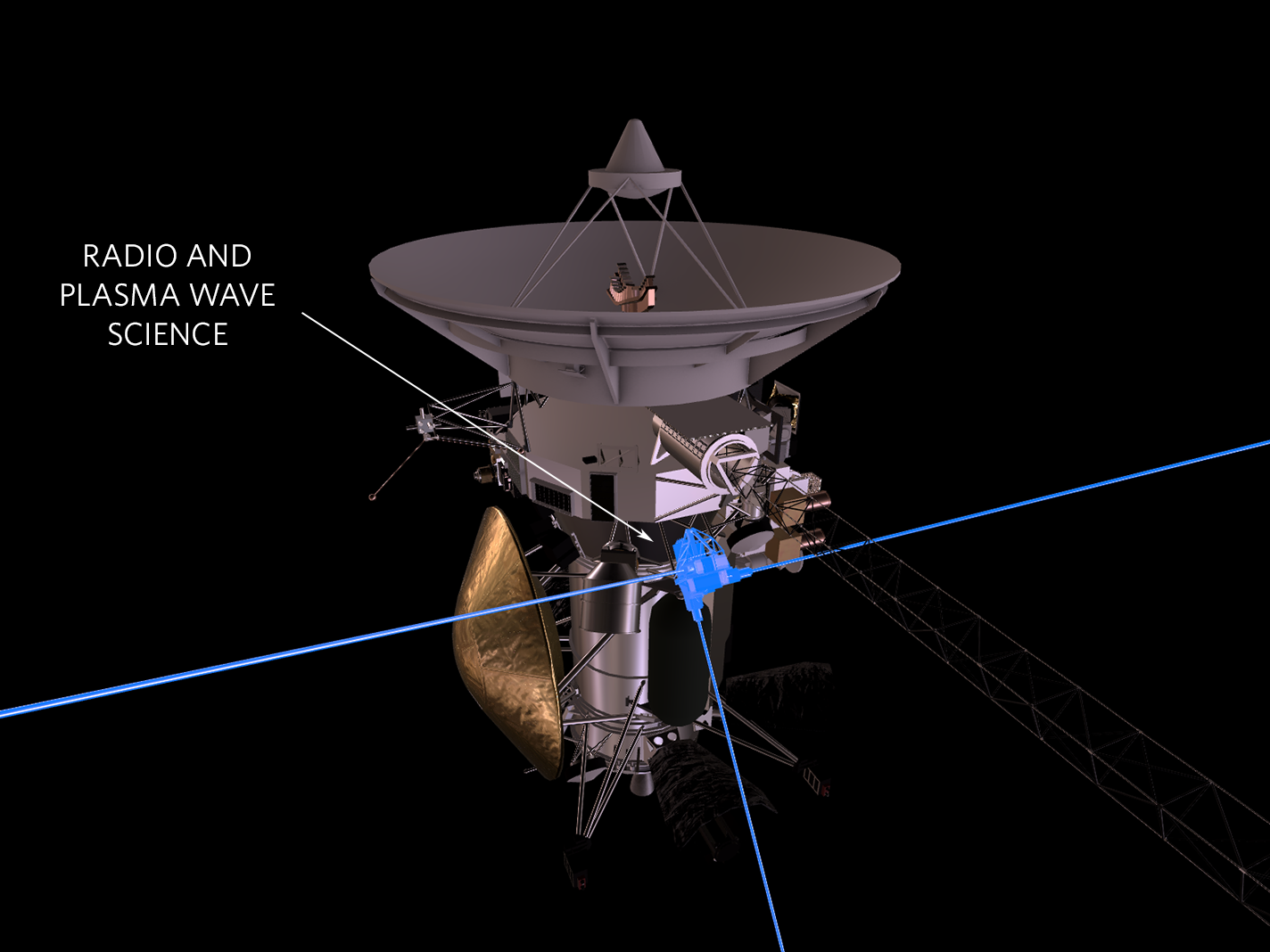Radio and Plasma Wave Science

How It Worked
The Radio and Plasma Wave Science, or RPWS, instrument detected radio and plasma waves, as well as the plasma medium through which Cassini passed, using a suite of antennas and sensors.
How We Used It
The instrument used three types of sensors to study the intensity of waves across a broad frequency range, and the density and temperature of plasma in the magnetic bubble surrounding Saturn -- its magnetosphere. The instrument could even "hear" dust hitting Cassini and lightning in Saturn’s atmosphere. By studying radio and plasma waves around Saturn, scientists can better understand Saturn’s relationship with its moons and rings, as well as how the planet interacts with the solar wind. For example, Saturn's auroras emit radio waves in approximately the same frequency range as AM radio stations on Earth.
loading cassini spacecraft...
Saturn is a favorite target for amateur and professional astronomers alike, for its beauty and because on a clear night, the planet and its rings are visible to anyone with a small optical telescope.
But with radio telescopes, Saturn is difficult to see from Earth. “It’s invisible,” said Bill Kurth, a University of Iowa physicist and member of Cassini’s Radio and Plasma Wave Science team. “We can’t listen to Saturn radiation from Earth because our ionosphere blocks it.”
The ionosphere is what allows amateur radio operators on Earth to chat across different continents when the curvature of Earth should block communication — their radio signals bounce off Earth’s ionosphere like a racquetball off a concrete wall. And just as radio waves from Earth bounce back down, waves above Earth’s ionosphere bounce back out. The radio and plasma science instrument was included on the Cassini mission to provide an up-close look at Saturn’s invisible environment that is impossible to see from Earth. Saturn’s radio emissions provided an excellent way to know when Saturn’s auroras are bright without needing to take images of the auroras.
The instrument’s electrical field sensor was one of the most prominent pieces of hardware on the Cassini spacecraft. Its three antennas were each 33 feet (10 meters) long and stuck out like an insect’s feelers to detect radio waves rippling through the Saturnian environment.
The instrument also detected plasma, a “soup” of super-hot ions (atoms that have lost one or more electrons) and free electrons that have been stripped from atoms. Plasma races from the sun in the solar wind but is also captured by magnetic fields. So by studying plasma around Saturn and Titan — where it’s dense or thin, and where it’s hot or not — researchers could sense Saturn’s magnetosphere and watch how it moves.
The spacecraft also determined where and how much dust was orbiting between Saturn’s moons and rings, and it did so by touch. “We’re talking dust particles the size of those in cigarette smoke, but there’s enough kinetic energy when that dust hits the spacecraft that it destroys the dust particle and a little part of the spacecraft.” The potent but miniscule collisions produced tiny puffs of plasma, which the instrument detected. When the dust impacts are converted to sound, the spacecraft’s passage through a dust cloud sounds like being in an automobile in a hail storm.

At a Glance
- Mass: 6.80 kg
- Average Operating Power: 7.00 W
- Average Data Rate: 0.90 kilobits/s
For more information, see the RPWS Engineering and Technical Write-up.
Cassini Orbiter Instruments
They surveyed and sniffed, analyzed and scrutinized. They took stunning images in various visible spectra. Cassini's 12 science instruments were designed to carry out sophisticated scientific studies of Saturn, from collecting data in multiple regions of the electromagnetic spectrum, to studying dust particles, to characterizing Saturn's plasma environment and magnetosphere.
Optical Remote Sensing
Mounted on the remote sensing pallet, these instruments studied Saturn and its rings and moons in the electromagnetic spectrum.
Fields, Particles and Waves
These instruments studied the dust, plasma and magnetic fields around Saturn. While most didn't produce actual "pictures," the information they collected is critical to scientists' understanding of this rich environment.
Microwave Remote Sensing
Using radio waves, these instruments mapped atmospheres, determined the mass of moons, collected data on ring particle size, and unveiled the surface of Titan.





